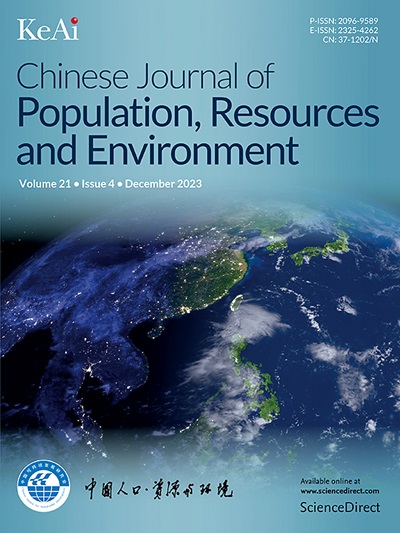了解低收入、中低收入、中高收入和高收入国家的贸易调整与森林密度之间的关系
IF 4.8
4区 环境科学与生态学
Q2 ENVIRONMENTAL STUDIES
Chinese Journal of Population Resources and Environment
Pub Date : 2025-06-01
DOI:10.1016/j.cjpre.2025.05.009
引用次数: 0
摘要
森林在生态和经济方面都是必不可少的。发展中国家的大多数农村人口依靠森林资源维持生计。自1980年以来,贸易对发展中国家的森林覆盖、密度和管理产生了重大影响。很少有研究审查贸易结构和国际初级商品贸易的变化如何影响森林密度。为了更好地理解贸易、贸易结构调整和森林密度之间的关系,本研究考察了52个发展中国家的四个收入水平:高收入(HI)、低收入(LI)、中高收入(UMI)和中低收入(LMI)。我们比较了森林覆盖率和森林密度的历史变化。对于替代结果,我们对整个面板使用了广义矩量法(GMM)模型,并对各种收入类别使用了随机效应模型。结果表明,非初级产品出口比例(PNPEXP)和制造业和服务业出口总量(TEXP)对森林密度有显著影响。这表明贸易和贸易结构可以改善一个国家的森林密度状况。本文章由计算机程序翻译,如有差异,请以英文原文为准。
Understanding the relationship between trade adjustment and forest density in lower, lower-middle, upper-middle, and high-income countries
Forests are essential for both ecological and economic aspects. Most rural people in developing countries rely on forest resources for their livelihood. Since 1980, trade has substantially affected forest cover, density, and management in developing countries. Few studies have examined how changes in trade structure and international trade in primary commodities affect forest density. To better understand the relationship between trade, trade structure adjustment, and forest density, this study examined 52 developing countries across four income levels: high income (HI), low income (LI), upper-middle income (UMI), and lower-middle income (LMI). We compared studies on historical changes in forest cover with those on forest density. For alternative outcomes, we used a generalized method of moments (GMM) model for the entire panel and a random-effects model for various income categories. The results show that the percentage of non-primary goods exported (PNPEXP) and total manufacturing and services exported (TEXP) significantly impact forest density. This suggests that trade and trade structure can improve a country’s forest density conditions.
求助全文
通过发布文献求助,成功后即可免费获取论文全文。
去求助
来源期刊

Chinese Journal of Population Resources and Environment
ENVIRONMENTAL STUDIES-
CiteScore
4.30
自引率
1.10%
发文量
791
审稿时长
79 days
期刊介绍:
The Chinese Journal of Population, Resources and Environment (CJPRE) is a peer-reviewed international academic journal that publishes original research in the fields of economic, population, resource, and environment studies as they relate to sustainable development. The journal aims to address and evaluate theoretical frameworks, capability building initiatives, strategic goals, ethical values, empirical research, methodologies, and techniques in the field. CJPRE began publication in 1992 and is sponsored by the Chinese Society for Sustainable Development (CSSD), the Research Center for Sustainable Development of Shandong Province, the Administrative Center for China's Agenda 21 (ACCA21), and Shandong Normal University. The Chinese title of the journal was inscribed by the former Chinese leader, Mr. Deng Xiaoping. Initially focused on China's advances in sustainable development, CJPRE now also highlights global developments from both developed and developing countries.
 求助内容:
求助内容: 应助结果提醒方式:
应助结果提醒方式:


